SinceEverSince:Naton
The following is ongoing coverage with accumulated articles regarding the Mariana Islands most significant archaeological finds to date
Roughly a decade ago, during renovations for the at-the-time Okura Hotel in Tumon, graves were surprisingly found to unfold the iscovery of a massive gravesite consisting of 3different levels –unheard of in the Mariana Islands. With gravesites and jewelry estimated to be at least 2500 years or older–this historic find of more than 400 sites is still absent of any recognition–even though it sits right inside our main tourism district.
Follow us here and Use the Force as we launch our own investigation to collaborate with the like-minded for justice for these people
Archaeologists: Two waves of Chamorro migration
Archaeologists have reason to believe that ancient Chamorros came from two waves of migration. On Tuesday, archaeologist Judy Amesbury presented findings from the Naton Beach excavation to the Rotary Club of Tumon Bay. The excavation took place nearly a decade ago, but the three-volume report was just released.
At Guam’s Naton Beach site in Tumon Bay, archaeologists found more than 400 burials from the Pre-Latte Period and Latte Period of Guam. More than 150 burials from Naton Beach were from the Pre-Latte Period and marked the largest number of burials from that time, as well as the earliest burials ever seen in the Marianas. According to Amesbury, this was the most significant excavation in the Marianas because of the very large number of early people.
The Pre-Latte Period is from 1,500 B.C. until latte stones were introduced. The Latte Period started around 1,000 A.D. and ended with Spanish contact in the 16th century.
More than 20 years ago, the archaeological company Micronesian Archaeological Research Services did an excavation in Saipan and found more than 500 cone shell beads and fragments of bracelets that dated back 3,500 years or more. No human remains were found with these artifacts, so archaeologists weren’t able to connect the ornaments with the people until excavating the Naton site.
“The number of burial goods is extraordinary,” said Amesbury when describing the Naton site. About 1,700 ornaments were found on human remains. These ornaments consisted of beads and bracelets made from shells and shark teeth. One burial contained glass beads, which indicated it took place after Spanish contact. Glass beads were made in Europe and were brought over from Spain to trade with the Mariana Island inhabitants.
Pre-latte ornaments mainly consisted of three types of cone shell beads — the same types found at the earlier excavation in Saipan — and beads made from clam shells, bracelets, and tiger shark teeth necklaces. Other types of adornment found were inlaid teeth and the use of an earthy pigment called ochre. Over 98 percent of the ornaments found at Naton were from pre-latte burials.
The remaining 2 percent of ornaments came from Latte Period burials. These ornaments consisted of cone shell beads, including a type that was a different shape from the pre-latte cone shell beads. Beads made from the spondylus shell were found. What appeared to be teeth from the silky shark were also found in the latte burials. Inlaid teeth weren’t found in latte burials, but eight burials revealed teeth with incised patterns of horizontal, diagonal or cross-hatched lines.

PACIFIC DAILY NEWS
Dig offers clues to past
The distinct differences between ornaments from pre-latte burials and latte burials support the hypothesis that two waves of migration occurred in Guam’s history. Last month, molecular anthropologist Miguel Vilar presented evidence from his study of DNA from living Chamorros that also supports the hypothesis. In addition, dental analysis of the remains found at Naton indicates a statistically significant difference between teeth from pre-latte burials and latte burials.
“(Archaeologists) never knew if the latte stones were just in seed to cultural development that the people thought of making after a while or if it was a new group of people coming in,” said Amesbury. “And now it looks like a new group of people. So that’s very interesting to know that there was more than one wave of migration.”
When people ask where the Chamorros come from, Amesbury is more confident to say, “It wasn’t just one boat full of people.”
Amesbury works for the Micronesian Archaeological Research Services and has been working in the Marianas for over 25 years. Her area of expertise is in the analysis of faunal remains, such as shell artifacts. She wrote numerous reports and publications about fishing and invertebrate collecting in the Marianas. She plans to publish a new booklet about the ornaments of Naton Beach. The Guam Council on the Arts and Humanities Agency and the Guam Visitors Bureau provided Amesbury with a grant to make a website and display in time for the Festival of Pacific Arts
for additional links:
http://www.kuam.com/story/31172960/historic-discovery-detailed-in-excavation-report
http://www.pacificnewscenter.com/local/7861



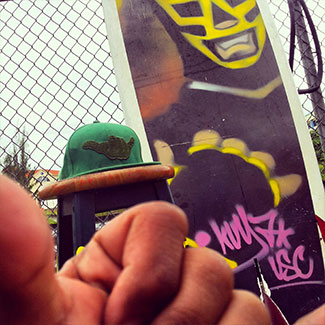
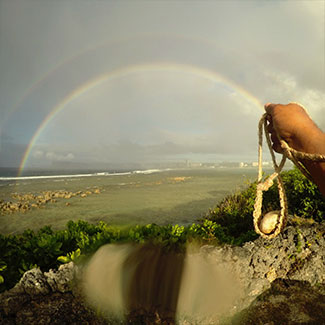
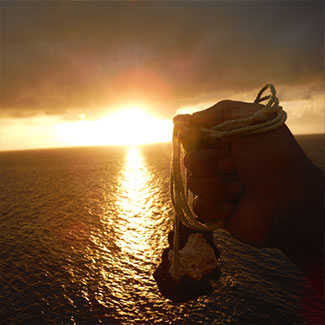

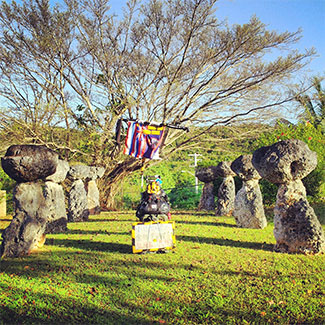
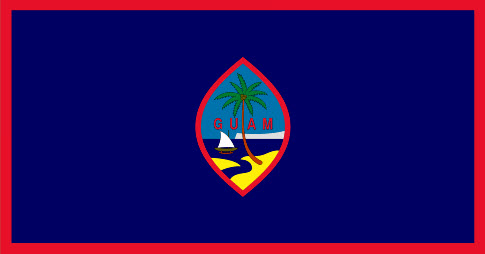
Comments
a penny for your two cents
and oh, if you want a pic to show with your comment, go get a gravatar!